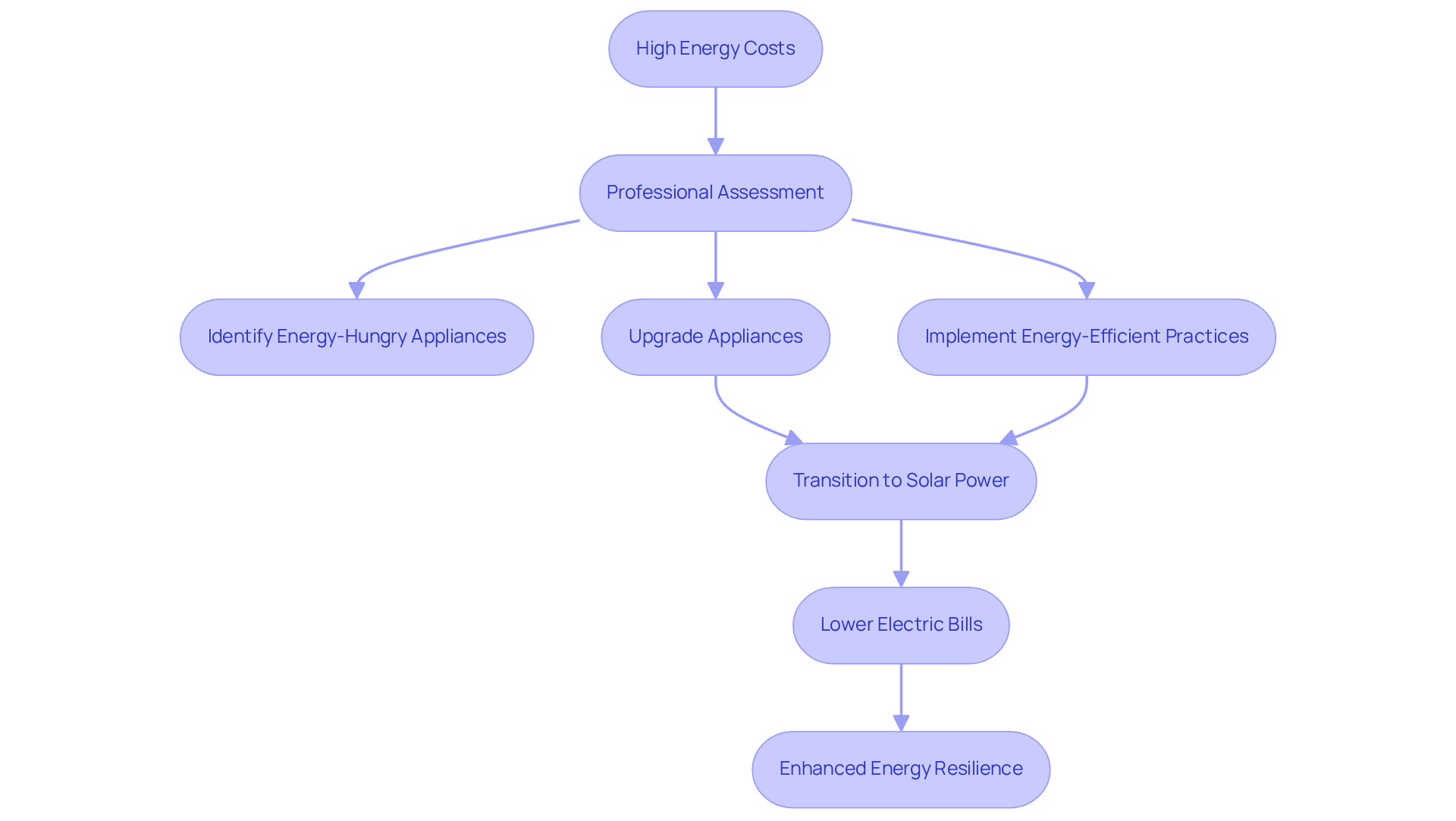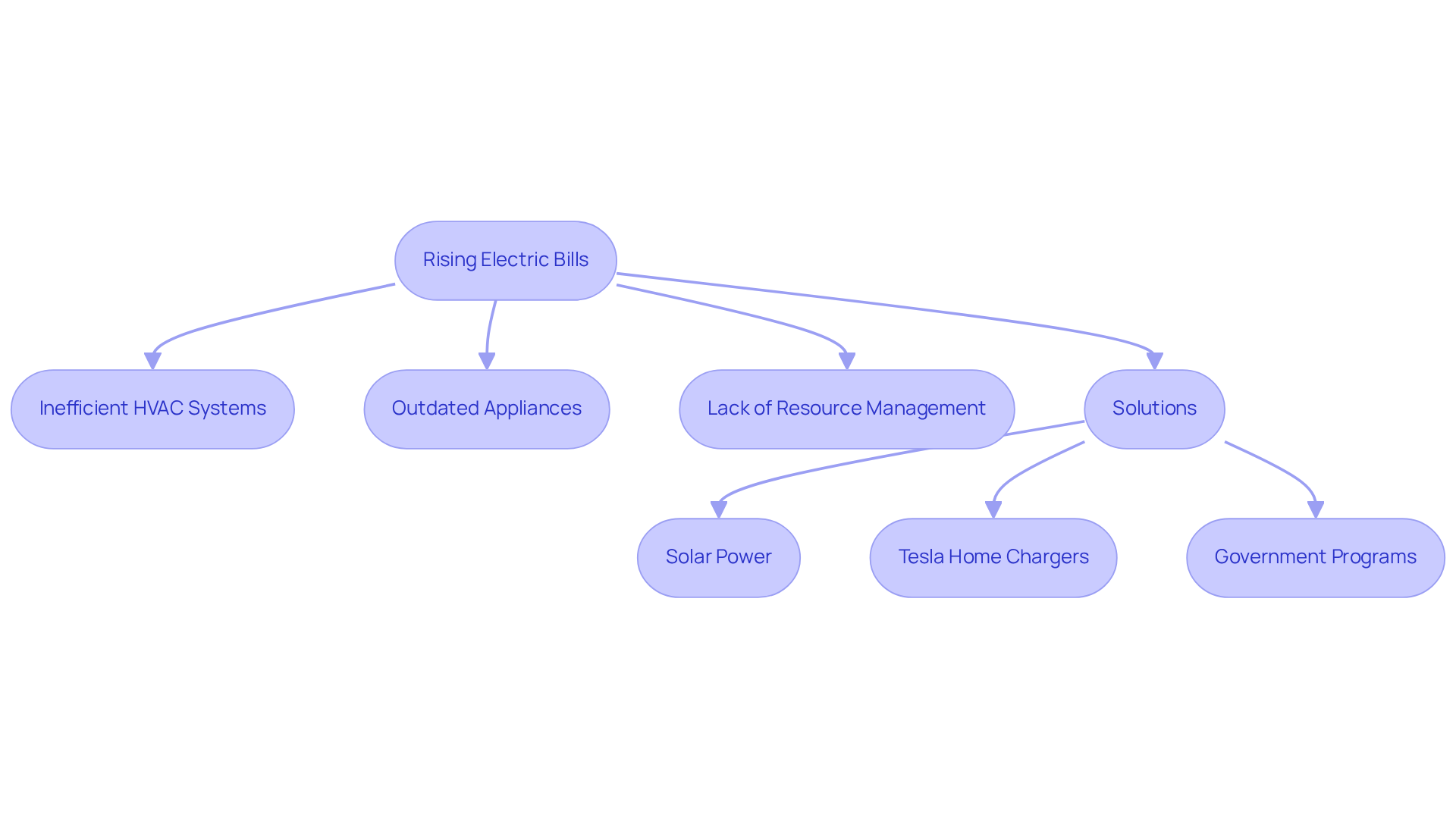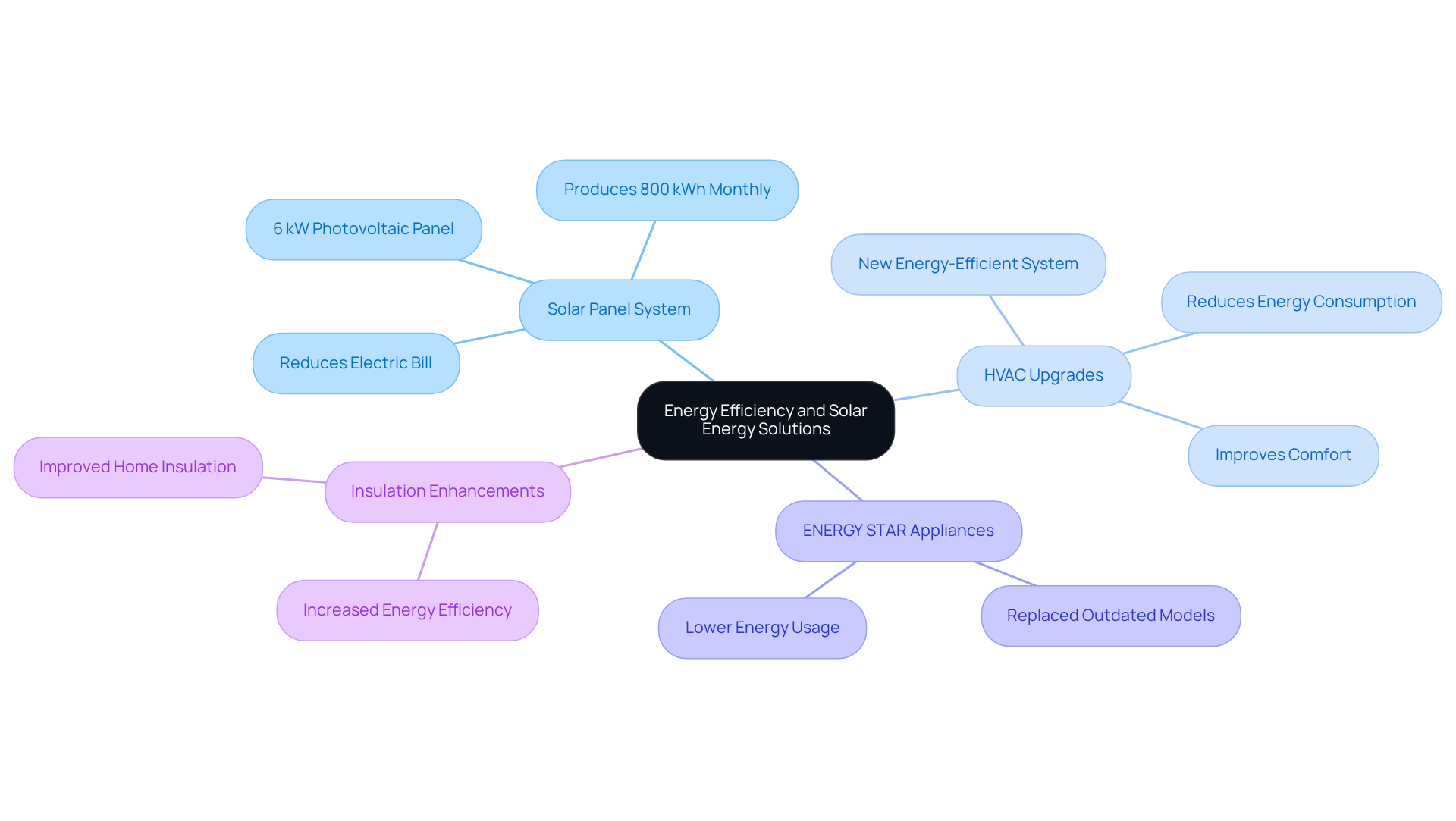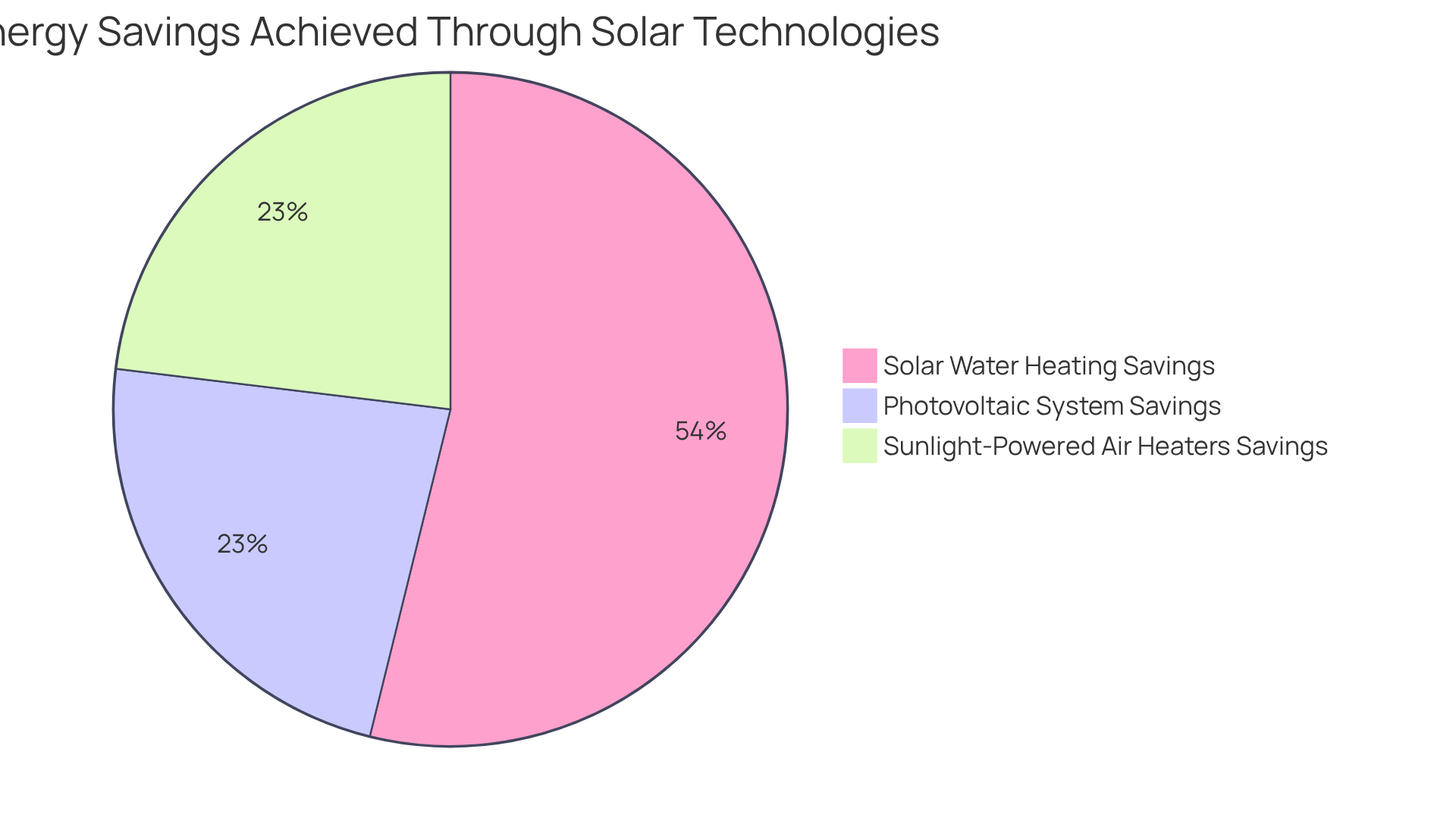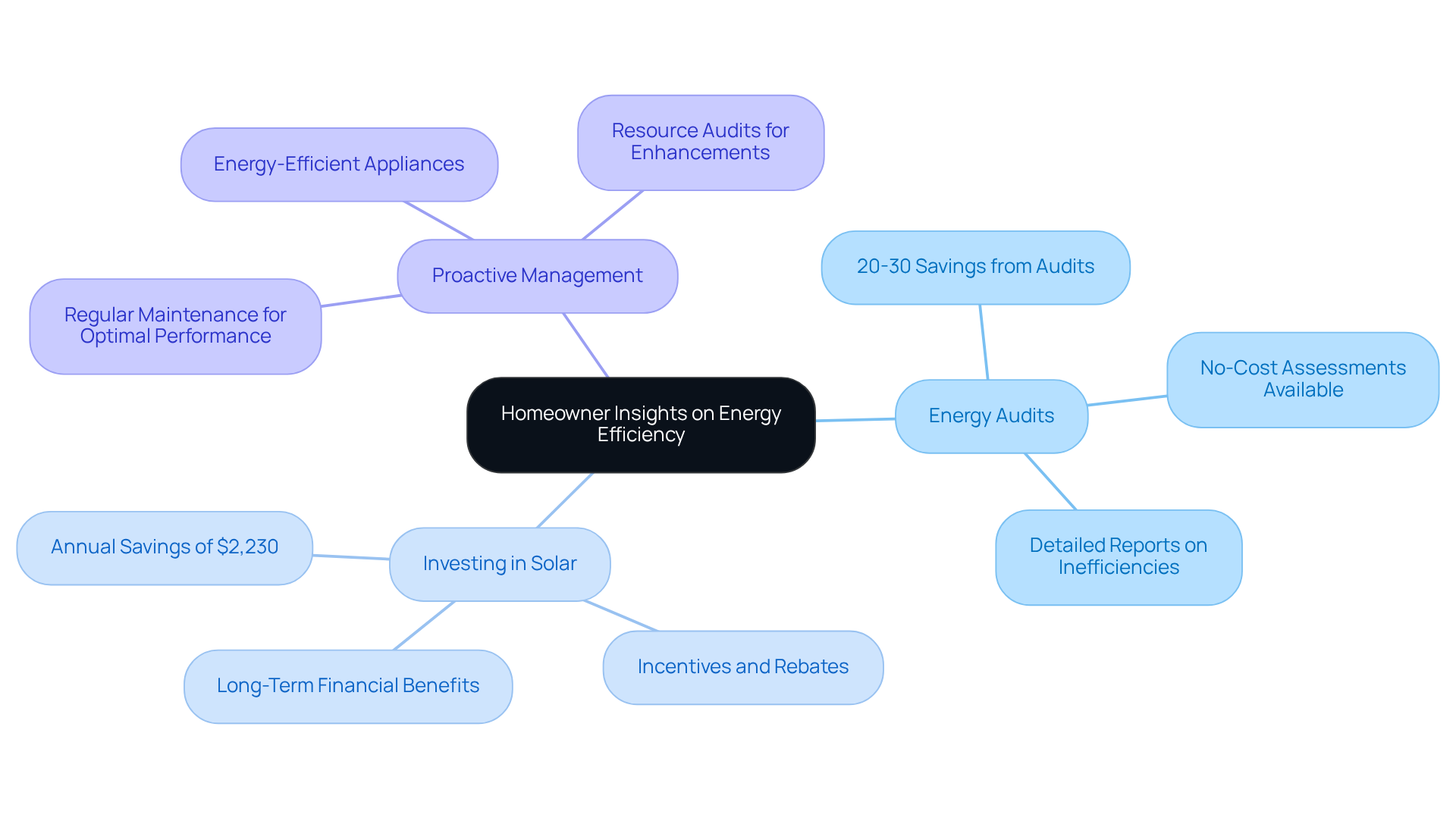Overview
Are you feeling overwhelmed by rising energy bills? You’re not alone. Many homeowners share your concerns, and there are effective ways to tackle these challenges. By implementing solar energy solutions and energy efficiency measures, you can reduce your electric bill kilowatt hours by an impressive 30%.
Consider the inspiring case of a family in California who took proactive steps to achieve significant savings. They installed a photovoltaic system and upgraded their appliances, demonstrating that these strategies not only lower costs but also contribute to a more sustainable future. Imagine the peace of mind that comes with energy independence amidst fluctuating energy prices.
Together, we can explore these solutions that not only benefit your wallet but also promote a healthier planet. It’s common to feel unsure about where to start, but know that support is available. Let’s work towards a more sustainable lifestyle, one step at a time.
If you’re ready to take action and make a positive change, reach out today. We’re here to guide you on this journey towards energy efficiency and independence.
Introduction
Rising energy costs have become a significant concern for many homeowners, especially in states like California, where utility bills are skyrocketing. We understand that this financial strain can feel overwhelming. Amidst these challenges, the promise of solar energy emerges as a beacon of hope, offering not just a way to cut costs but also a path toward sustainability.
Yet, with so many options available, families may wonder: how can they effectively reduce their electric bill kilowatt hours by as much as 30%? This article explores a compelling case study of a family that transformed their energy consumption through solar solutions and efficiency upgrades.
We reveal actionable insights that could benefit countless others facing similar challenges. Together, we can navigate this journey toward energy independence and a brighter, more sustainable future.
Background: The Family’s Energy Consumption and Initial Costs
Many homeowners, like a family in California, often find themselves grappling with hefty monthly power bills. This particular family faced an energy usage of approximately 1,200 kilowatt hours, resulting in an average electric bill kilowatt hours of around $300—a figure that significantly surpassed the projected state average of about $247 in 2025.
It’s common to feel overwhelmed by such expenses, especially when outdated appliances, inadequate insulation, and a lack of energy-efficient practices contribute to the high costs. Recognizing the need for change, the family sought professional guidance to assess their power consumption. This evaluation revealed crucial areas for improvement, particularly the impact of energy-hungry appliances.
By addressing these concerns, they laid the groundwork for transitioning to solar power solutions that can lower electric bill kilowatt hours. Together, they could embrace resource-saving practices and upgrade their devices, not only lowering their monthly expenses but also enhancing their home’s energy resilience.
This shift promises significant long-term savings, especially in light of California’s rising electricity prices, which have surged by approximately 47% from 2019 to 2023. If you find yourself in a similar situation, remember that you’re not alone—let’s work towards a more sustainable and cost-effective energy future together.
Challenge: Rising Electric Bills and Energy Inefficiency
As power costs continue to rise, many California households are feeling the pinch, with their electric bill kilowatt hours increasing by an average of 15% over the past two years. It’s understandable to be concerned about this financial strain. Factors contributing to this rise include:
- Inefficient HVAC systems
- Outdated appliances
- A lack of effective resource management practices
We understand that homes often lack optimization for energy efficiency, leading to significant energy waste. This situation is not unique; it reflects a broader trend among homeowners in the state, where soaring utility costs have become a pressing issue. By 2025, the electric bill kilowatt hours for the average residential electricity rate in California is expected to exceed 32 cents per kilowatt-hour, which is more than double the national average. With the typical monthly electric bill kilowatt hours for residents hovering around $247—based on an average usage of 825 kWh at a rate of 30 cents per kWh—the urgency for effective solutions to combat rising costs has never been greater.
Solar power solutions, including Tesla home chargers and various government programs, offer eco-friendly alternatives that can significantly alleviate these expenses. Since 2015, monthly bills for homeowners in California have increased by about $21 beyond inflation, highlighting the ongoing financial burden families face. By exploring renewable power alternatives, tenants and property owners can not only lessen their financial strain but also contribute to long-term sustainability and efficiency. Together, we can work towards a brighter, more energy-independent future. Are you ready to take the first step towards reducing your energy costs? Let’s explore these solutions together.
Solution: Implementing Solar Energy and Energy Efficiency Measures
Understanding the burden of rising energy expenses can be overwhelming for many families. To address this concern, one family took a proactive step by setting up a renewable energy system while also implementing energy efficiency strategies. A specialist recommended a 6 kW photovoltaic panel system, which is expected to produce approximately 800 kWh monthly, significantly reducing their electric bill by lowering the kilowatt hours used. Alongside the solar installation, the family upgraded their HVAC system, replaced outdated appliances with ENERGY STAR-rated models, and enhanced insulation throughout their home. These combined strategies not only aim to lessen their dependence on grid electricity but also improve the overall comfort and efficiency of their living environment.
In California, property owners are increasingly recognizing the importance of such enhancements. It’s common to feel uncertain about the best steps to take, but these efficiency improvements are projected to save residents substantial amounts on their electric bill kilowatt hours by 2025. Together, we can make strides towards a more sustainable future, ensuring that your home is not just energy-efficient but also a haven of comfort. If you’re ready to explore these options and embrace energy independence, let’s work towards a brighter, more sustainable tomorrow.
Results: Achieving a 30% Reduction in Electric Bill Kilowatt Hours
We understand that energy bills can weigh heavily on your budget. After implementing their photovoltaic system and adopting energy efficiency practices, one family achieved an impressive 30% reduction in their kilowatt hours on the electric bill. Their monthly expenses fell from $300 to approximately $210, resulting in annual savings of $1,080. This transition not only led to significant cost savings but also encouraged a more sustainable lifestyle by greatly reducing their carbon footprint.
Numerous case studies support these positive outcomes. For instance, a household in Southern California saw over a 70% decrease in utility costs after they installed a solar water heating system. In cooler regions, passive power collection designs have proven effective, with homes featuring large south-facing windows to capture sunlight during winter months. Furthermore, sunlight-powered air heaters can lower a household’s carbon output by 20 to 40 percent and cut monthly utility costs by 30 percent, according to Clean Energy Resource Teams.
Families across the state are recognizing the advantages of harnessing sunlight power, with many noting substantial drops in their utility expenses. Together, we can embrace the importance of transitioning to renewable energy sources, fostering both financial savings and a healthier planet for future generations. Are you ready to explore how solar energy can transform your home and empower your family towards energy independence?
Insights: Lessons Learned and Recommendations for Homeowners
As a homeowner, it’s natural to feel concerned about rising energy bills. This case study highlights several important insights that can guide you towards a more sustainable and cost-effective future through solar power and efficiency improvements.
-
Conducting a thorough resource audit is essential in identifying specific areas that may need enhancement, potentially leading to significant savings. For example, many households that follow through on energy audit recommendations often see a remarkable reduction in their energy bills by 20-30% within the first year.
-
Investing in high-quality photovoltaic panels and energy-efficient appliances not only brings immediate savings but also provides substantial long-term financial benefits. Imagine being able to save an average of $1,500 each year simply by adopting energy-efficient practices. For those who implement photovoltaic systems, the median annual savings can reach $2,230. Additionally, by leveraging available incentives and rebates, you can significantly offset installation costs, making these valuable upgrades more accessible.
-
We understand that managing energy consumption can feel overwhelming. However, experts emphasize that proactive power management, including regular maintenance of your solar systems, is crucial for maximizing savings and ensuring optimal performance. By focusing on these strategies, you can effectively reduce your electric bill kilowatt hours and enhance your energy independence. Together, we can work towards a brighter, more sustainable future for your home.
Conclusion
We understand that the journey towards reducing your electric bill through solar solutions can feel daunting, especially with rising energy costs affecting many families. However, adopting renewable energy strategies and enhancing energy efficiency is not only achievable but essential. Homeowners like you can significantly alleviate financial burdens while contributing to a sustainable future.
This case study illustrates how one family’s proactive measures—such as installing a photovoltaic system and upgrading appliances—resulted in a remarkable 30% reduction in their electricity consumption. Key insights reveal that:
- Conducting energy audits
- Investing in quality technology
- Implementing regular maintenance
can lead to substantial savings and improved energy independence. As the average electric bill is poised to increase, these actions become increasingly critical.
Ultimately, transitioning to solar energy and embracing efficiency practices represents a powerful opportunity for you to take control of your energy expenses. Together, we can foster financial resilience while promoting a healthier planet for generations to come. Taking the first step towards this transformation can lead to lasting benefits—are you ready to explore how solar energy can reshape your household energy landscape?



